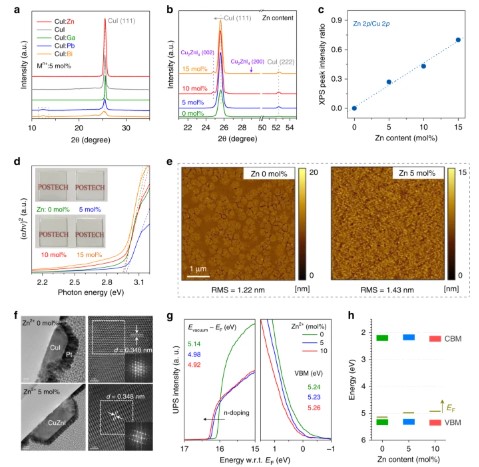High-performance p-channel transistors with transparent Zn doped-CuI
- 저자
- Ao Liu, Huihui Zhu, Won-Tae Park, Se-Jun Kim, Hyungjun Kim, Myung-Gil Kim*, Yong-Young Noh*
- 저널명
- Nature Communications, 11, 4309 (2020)
- 년도
- 2020
- Link
- https://doi.org/10.1038/s41467-020-18006-6 752회 연결
[Abstract]
‘Ideal’ transparent p-type semiconductors are required for the integration of high-performance thin-film transistors (TFTs) and circuits. Although CuI has recently attracted attention owing to its excellent opto-electrical properties, solution processability, and low-temperature synthesis, the uncontrolled copper vacancy generation and subsequent excessive hole doping hinder its use as a semiconductor material in TFT devices. In this study, we propose a doping approach through soft chemical solution process and transparent p-type Zn-doped CuI semiconductor for high-performance TFTs and circuits. The optimised TFTs annealed at 80 °C exhibit a high hole mobility of over 5 cm2 V−1 s−1 and high on/off current ratio of ~107 with good operational stability and reproducibility. The CuI:Zn semiconductors show intrinsic advantages for next-generation TFT applications and wider applications in optoelectronics and energy conversion/storage devices. This study paves the way for the realisation of transparent, flexible, and large-area integrated circuits combined with n-type metal-oxide semiconductor.
